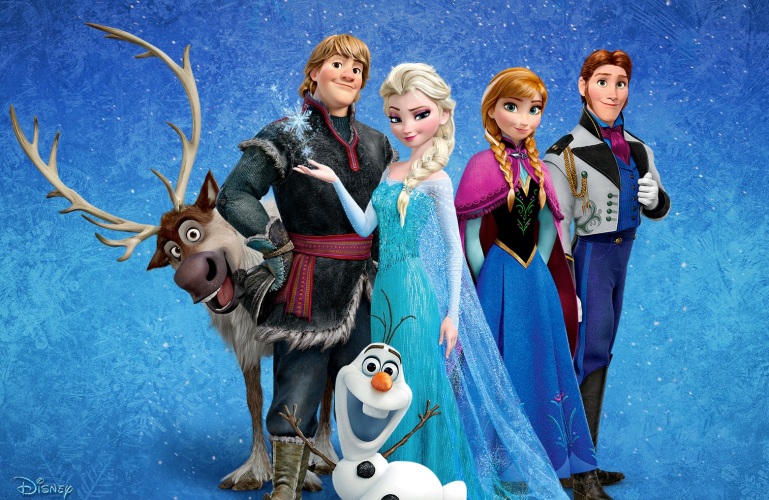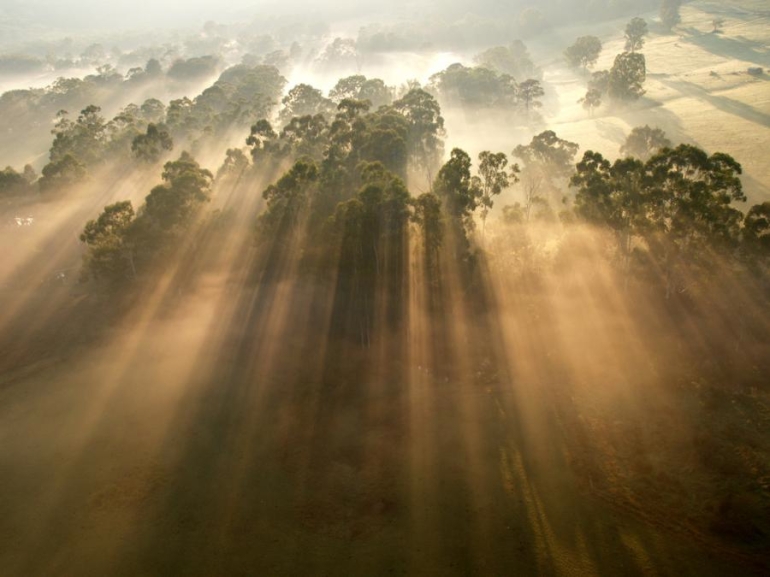So… this time I will be writing a review on the recent-ish addition to the Disney movie collection, Frozen. Just so you know ahead of time, there may be some spoilers, but I promise not to give away the ending!
Similar to Toy Story, A Bug’s Life, and Tangled, Frozen was made using 3D animations as opposed to the familiar drawing-type animations of The Lion King, Snow White and the Seven Dwarves, and many of the other well-known Disney movies.
As a result of my tendencies to dislike change and 3D animations in general, it took me a while to warm up to the characters, but once I got over my biases, I found the whole thing to be quite enjoyable.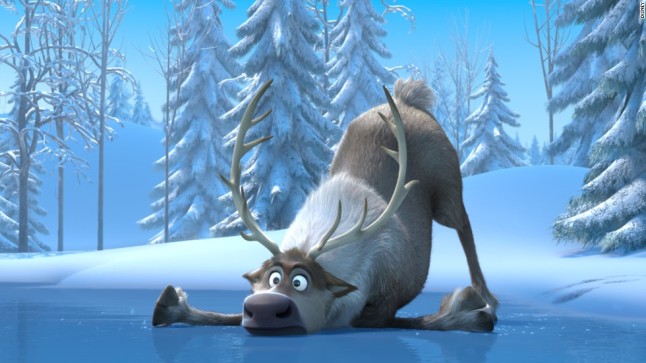
When comparing the art to previous Disney films, the art in Frozen was by far the most beautiful. Although the glow effects from Tangled are a close second, I felt that the effects in Frozen were a lot less attention-grabbingly (that’s not a word, is it) random, and worked more towards subtle enchantment.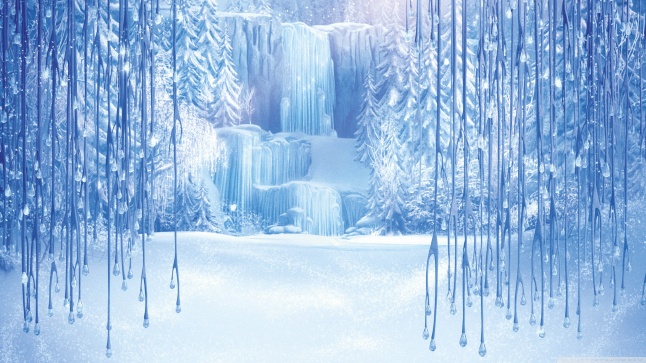 Speaking of effects, my favorite were by far the snowflake ones.
Speaking of effects, my favorite were by far the snowflake ones.
(btw, Elsa’s ice castle is sooooo cool~~
…impractical, though)
Anyway, the overall plot was good and still included the hidden themes that let even adults enjoy the so-called “children’ movies”. For example, in The Lion King, the whole “Hakuna Matata” thing almost definitely refers to drug use (sorry, but it’s true… you’ve got “forget your past”, losing track of time (when Simba gradually grows up), nonsensical stuff (like about the stars)… “no worries”….). In Snow White and the Seven Dwarves… well… just think about that to yourself for a while and I’m sure you’ll get it….
Ahem. Moving on….
So, in Frozen, there are several hidden themes, the most noticeable of which is a focus on capitalism, or just the world of business in general. Arendelle is a major trading port, and the Duke of Weasel… Weselton “seeks to exploit Arendelle for profit” (-Wikipedia).
Not only that, but the shopkeeper of a general store randomly placed in the forest that is posing as a trading post (which I must admit is quite hilarious) charges ridiculously expensive prices for his winter supplies (that are obviously in disrepair) while also advertising for summer products when it was very clearly snowing outside. He also happened to ask about the weather at some point and…pfft!
Anyway, these characters and their objectives, along with several other things (Khristoff selling ice to make a living, etc.) all point to one of the most basic principles of business: do anything to make a profit (although, Khristoff is a prime example of someone who might be a bit too naive when it comes to down to it).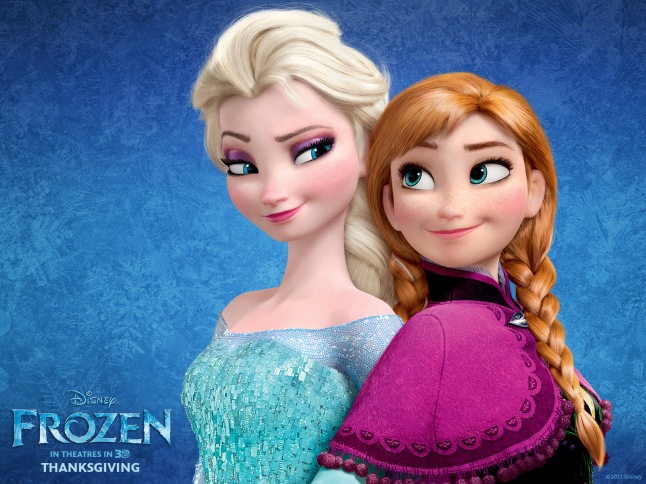
Speaking of the characters, I really love the development of the main characters; although, I kind of felt that the side characters were a bit too simple….
Even though the point of most movies is what the main characters go through, I feel that the side characters are just as important to add more depth to stories. I understand that it is not always easy to show it, and that Frozen is really meant mostly for the younger generations (while still appealing to older ones), but it kind of… disappointed me, I guess that more effort wasn’t put into the side characters and most of them were stuck with being able to be summed up completely in one sentence or less.
On top of that, I was pretty disappointed by Anna. I am 90% sure that Anna is supposed to be the main female lead and Elsa the secondary one, but she is so normal and experiences so little development that Elsa overshadows her.
It might be too much to ask, but I was hoping she would go through more than just “Oh, I guess I really was wrong, but that’s okay because now I got it right” (trying really hard not to put any spoilers). I feel like she was more of a flat character (meaning she didn’t change much), rather than a round character like Elsa (pretty much the opposite of “flat”). Truth be told, if most of the story line didn’t follow Anna, I think I might have completely considered her as another side character.
Part of the problem is that she and Kristoff are much too similar. Now, this wouldn’t have been a problem if she had some special characteristic that set her apart, but mainly all that drives her is her naive views of love and the world around her, and she is considerably lacking in any strong personality traits (besides naïveté and overdone awkwardness) that draw the viewer’s attention.
The characteristic didn’t have to be anything particularly unique, maybe she can actually (sort-of) defend herself by accident, or has a passion for learning, or anything, really. I felt like the producers tried too hard to make her “normal” and left out the important bits. In other words, I strongly believe that they should have given Anna’s character more complexity.
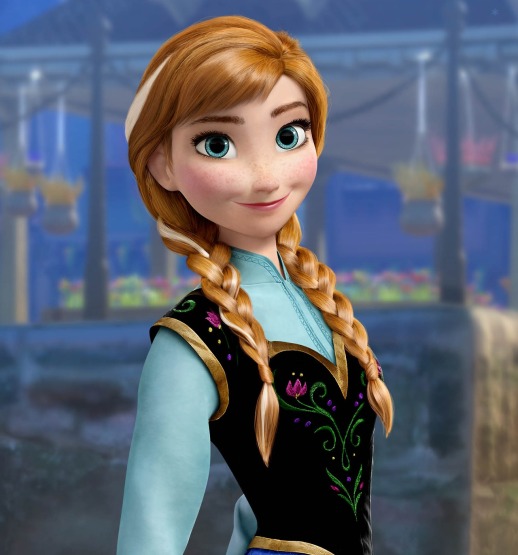
I also kind of wanted Anna to have some sort of secret power that was sealed with her memories, like calling summer after the winter (you know, because she has red hair and is very active), but unfortunately that hope was a little too unrealistic (and fantasy-like… I don’t think everyone likes the concepts of elemental-magic as much as I do) and that kind of disappointed me too. But, well… that one was kind of my fault….
TL,DR: Good movie, pretty art (forgot to mention catchy songs), but character development on anyone besides Elsa was a bit lacking.
